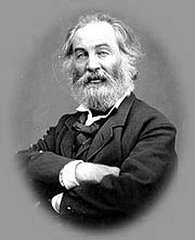Big Frank just finished Jon Meacham's biography of Andrew Jackson entitled American Lion:Andrew Jackson in the White House. While not exclusively a hagiography it never veers for long from the path of praise. The general thrust of the book is perhaps nicely captured by the above statue of Jackson which is in the center of Lafayette Square within President's Park in Washington, D.C., just to the north of the White House. Jackson is in uniform (modeled after the one he worn at the Battle of New Orleans), raising his hat with his right hand, while controlling the reins with his left hand as his horse rises on its rear legs (see above). This is the image of Jackson the war hero and the president who kept the union together thus postponing the Civil War for some two decades.
In the wake of the George Floyd demonstrations Andrew Jackson, along with many other American prominent historical figures were reexamined and found to be deeply flawed. Jackson's darker legacy as a slave holder and exterminator of Native Americans came to the fore. This centers primarily on Jackson's responsibility for the forced removal of Cherokee to Oklahoma in 1836-1850, which resulted in the deaths of some 4,000 Native Americans. The pedestal of the above statute was painted with the inscription "killer" and the demonstrators tied ropes and tried to topple the statue. Jackson stood firm and 4 of the demonstrators later were changed with destruction of federal property.
In reading this biography Big Frank was mostly left by Meacham, the author, with a generally positive view of Jackson. Jackson's role in the removal of the Cherokee was given much less press than his role in preserving the union, which centered primarily on his facing down South Carolina, led by John C. Calhoun, on the issue of nullification. In addition, Jackson like many of the early presidents, 12 out of 18, were slaveholders. Unlike Washington, Jackson did not free any of his slaves ever.
So, what's his positive legacy. For good or bad, Jackson is responsible for the strengthening of the presidency viz a vis the other two branches (legislature and supreme court). Strengthening and modeling its make towards the president's position today. Some of the ways future presidents followed Jackson were these as listed by Meacham:
- Running at the head of a national party;
- Fighting for a mandate from the people to govern in particular ways on particular issues;
- Depending on a circle of insiders and advisers;
- Using the media to transmit a consistent message at a constant pace; and
- Using the veto as political, not just a constitutional, weapon.
Some of the many other insights that Meacham brought out in his biography were how ill Jackson was for most of his presidency. It doesn't really matter which year or time you are talking about, Jackson was not well. He suffered from rotting teeth, chronic headaches, failing eyesight, bleeding in his lungs from TB, internal infections and pain from two bullet wounds from two separate duels. Yet despite all these he served two terms and was fully involved in both.
Another aspect brought to the fore in this biography was what came to be Jackson's adopted family: the Donaldsons, Andrew and Emily and four children. Andrew and Emily were first cousins and Emily was the niece of Jackson's wife, Sarah, who died before Jackson moved to Washington. Emily in a way took the place socially of Jackson's wife and became the White House hostess. Her husband Andrew served as Jackson's first secretary and all of them lived in the White House. Emily died of TB in the final year of the Jackson presidency. She was 29 at that time and at home in Nashville, looking out the window waiting for her husband to return from D.C. He arrived two days too late.
Emily Donaldson
During the first two years of his presidency Martin Van Buren, who was serving at that time as secretary of state and later as vice-president during Jackson's second term, went for horseback rides with Jackson every morning. Perhaps that led to the following political cartoon from 1836 of Jackson in a horserace with Martin Van Buren and others vying for the presidency at that time. The cartoon takes a slice of reality, Jackson on a visit to a racecourse when in danger from a wild horse said to Van Buren, "Get behind me, Mr. Van Buren. He will run you over." In time, as shown in the cartoon those words are thrown out as coming from Jackson as he rides Van Buren to victory in a race with the others running for president at that time: Daniel Webster, Hugh Lawson White, and William Henry Harrison.
Finally, Jackson lived outside of Nashville on a 1,000 acre cotton plantation with at the time of his death 110 slaves. He naturally had to make a number of trips to Washington and back from his home in Nashville. Each journey at that time prior to railroads took around a month. It's hard to imagine making such a journey under the conditions at the time, largely stage coaches with stops at fairly primitive inns along the way. Breakdowns were frequent as was the loss of baggage. When Andrew Donaldson returned to Nashville, belatedly as noted above, he personally brought the above portrait of Emily for fear of it getting lost if he shipped it.









No comments:
Post a Comment